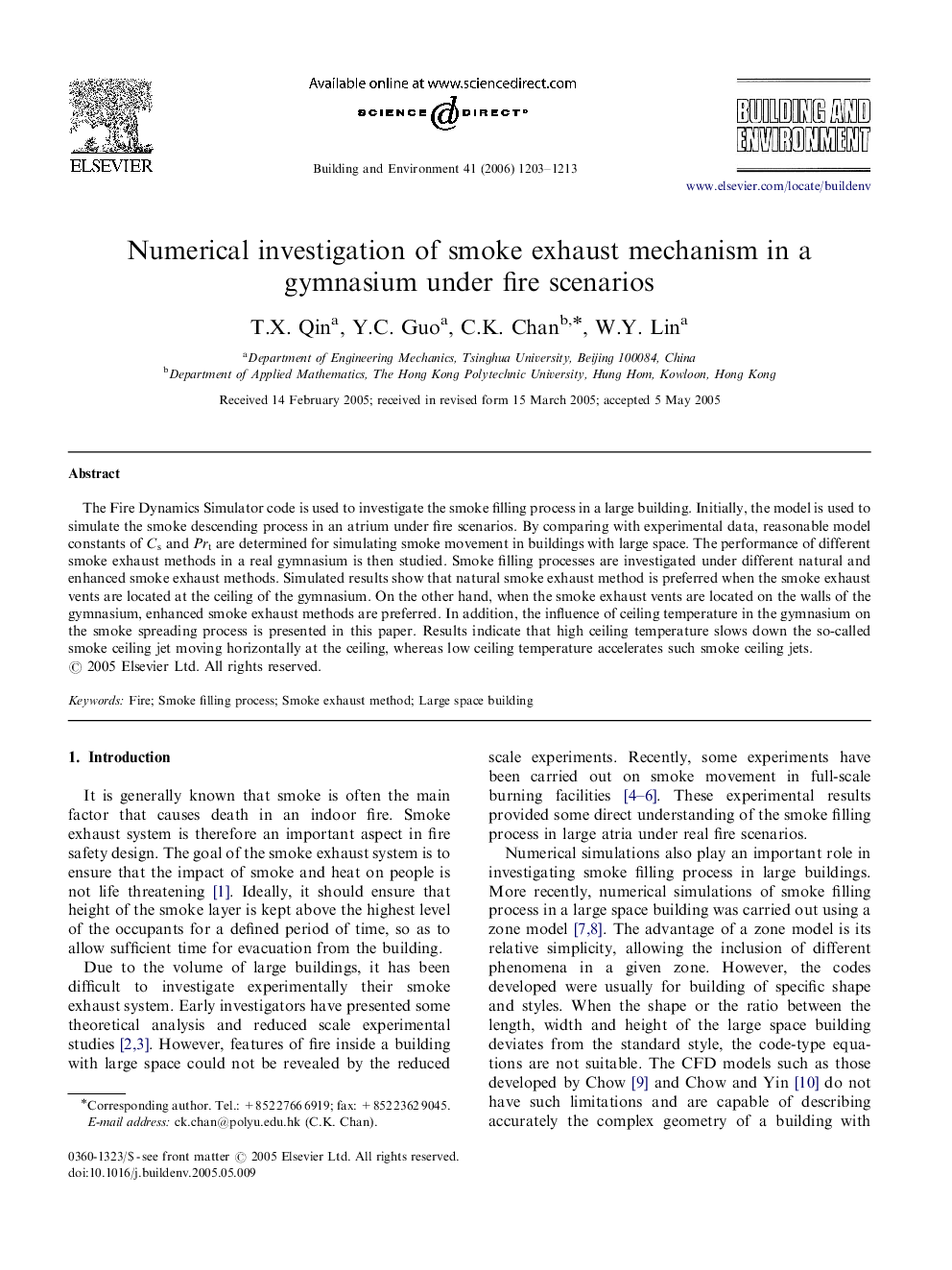| Article ID | Journal | Published Year | Pages | File Type |
|---|---|---|---|---|
| 250292 | Building and Environment | 2006 | 11 Pages |
The Fire Dynamics Simulator code is used to investigate the smoke filling process in a large building. Initially, the model is used to simulate the smoke descending process in an atrium under fire scenarios. By comparing with experimental data, reasonable model constants of CsCs and PrtPrt are determined for simulating smoke movement in buildings with large space. The performance of different smoke exhaust methods in a real gymnasium is then studied. Smoke filling processes are investigated under different natural and enhanced smoke exhaust methods. Simulated results show that natural smoke exhaust method is preferred when the smoke exhaust vents are located at the ceiling of the gymnasium. On the other hand, when the smoke exhaust vents are located on the walls of the gymnasium, enhanced smoke exhaust methods are preferred. In addition, the influence of ceiling temperature in the gymnasium on the smoke spreading process is presented in this paper. Results indicate that high ceiling temperature slows down the so-called smoke ceiling jet moving horizontally at the ceiling, whereas low ceiling temperature accelerates such smoke ceiling jets.
